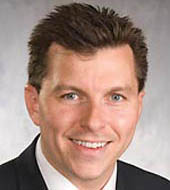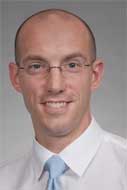Resumo
Definição
História e exame físico
Principais fatores diagnósticos
- presence of risk factors
- unexpected onset
- apprehension and worry
- behavioural avoidance
- tachycardia
- positive PRIME-MD panic screen
- Panic Disorder Severity Scale (PDSS)
- GAD-7 cute score ≥10
Outros fatores diagnósticos
- palpitations; chest pain and discomfort
- nausea and abdominal pain
- dizziness
- perceptual abnormality
- respiratory symptoms
- reliance on safety cues
- paraesthesias
- muscle shaking
- sweating
- fainting
- chills or hot flushes
Fatores de risco
- history in first-degree relatives
- age 18 to 39 years
- female sex
- white and Native American ethnicity
- major life events
- comorbid disorders
- psychological factors
- asthma and respiratory variability
- cigarette smoking
- caffeine use
Investigações diagnósticas
Primeiras investigações a serem solicitadas
- clinical assessment
Investigações a serem consideradas
- ECG
- blood glucose
- thyroid function tests
- metabolic panel
- toxicology screen
Algoritmo de tratamento
acute panic attack
panic disorder
panic attacks without panic disorder
Colaboradores
Autores
Craig N. Sawchuk, PhD

Professor
Department of Psychiatry and Psychology
Mayo Clinic
Rochester
MN
Declarações
CNS declares that he has no competing interests.
Jason P. Veitengruber, MD

Associate Professor
Department of Psychiatry and Behavioral Sciences
University of Washington School of Medicine
Seattle
WA
Declarações
JPV declares that he has no competing interests.
Revisores
Tanveer A. Padder, MD
Chairman
Department of Psychiatry
Trinity School of Medicine
Warner Robins
GA
Declarações
TAP declares that he has no competing interests.
Paul Blenkiron, BM BCh, MA
Consultant Psychiatrist
Leeds and York Partnership NHS Foundation Trust
Bootham Park Hospital
York
UK
Declarações
PB declares that he has no competing interests.
Philip J. Cowen, MD, FRCPsych, FMedSci
Professor of Psychopharmacology
Warneford Hospital
Oxford
UK
Declarações
PJC declares that he has no competing interests.
Toshiaki A. Furukawa, MD, PhD
Professor and Chair
Department of Psychiatry and Cognitive-Behavioral Medicine
Graduate School of Medical Sciences
Nagoya City University
Nagoya
Japan
Declarações
TAF has received research funds and speaking fees from Astellas, Dai-Nippon, Sumitomo, Eli Lilly, GlaxoSmithKline, Janssen, Meiji, Otsuka, Schering-Plough, and Yoshitomi. He was on a research advisory board for Meiji and Mochida, and is currently on research advisory boards for Sekisui chemicals and Takeda Science Foundation. He has received royalties from Igaku-Shion and Seiwa-Shoten Publishers. The Japanese Ministry of Education, Science, and Technology and the Japanese Ministry of Health, Labor, and Welfare have also funded his research.
Créditos aos pareceristas
Os tópicos do BMJ Best Practice são constantemente atualizados, seguindo os desenvolvimentos das evidências e das diretrizes. Os pareceristas aqui listados revisaram o conteúdo pelo menos uma vez durante a história do tópico.
Declarações
As afiliações e declarações dos pareceristas referem--se ao momento da revisão.
Referências
Principais artigos
American Psychiatric Association. Diagnostic and statistical manual of mental disorders, 5th ed., text revision, (DSM-5-TR). Washington, DC: American Psychiatric Publishing; 2022.
Andrews G, Bell C, Boyce P, et al. Royal Australian and New Zealand College of Psychiatrists clinical practice guidelines for the treatment of panic disorder, social anxiety disorder and generalised anxiety disorder. Australian & New Zealand Journal of Psychiatry. 2018;52(12):1109-172.Texto completo
Penninx BW, Pine DS, Holmes EA, et al. Anxiety disorders. Lancet. 2021 Mar 6;397(10277):914-27.Texto completo Resumo
Katzman MA, Bleau P, Blier P, et al. Canadian clinical practice guidelines for the management of anxiety, posttraumatic stress and obsessive-compulsive disorders. BMC Psychiatry. 2014;14 Suppl 1:S1.Texto completo Resumo
Roy-Byrne P, Craske MG, Sullivan G, et al. Delivery of evidence-based treatment for multiple anxiety disorders in primary care: a randomized controlled trial. JAMA. 2010 May 19;303(19):1921-8. Resumo
Artigos de referência
Uma lista completa das fontes referenciadas neste tópico está disponível para os usuários com acesso total ao BMJ Best Practice.
Diagnósticos diferenciais
- Agoraphobia
- Specific phobia
- Social anxiety disorder
Mais Diagnósticos diferenciaisDiretrizes
- Diagnostic and statistical manual of mental disorders: 5th edition, text revision (DSM-5-TR)
- Generalised anxiety disorder and panic disorder in adults: management
Mais DiretrizesFolhetos informativos para os pacientes
Panic attacks: what are they?
Panic attacks: what are the treatment options?
Mais Folhetos informativos para os pacientesConectar-se ou assinar para acessar todo o BMJ Best Practice
O uso deste conteúdo está sujeito ao nosso aviso legal
